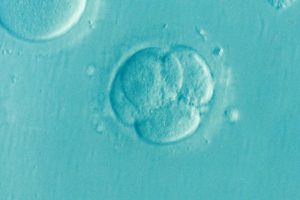
Menstruation
Did you know that many women mistakenly think the first day of their cycle is when they see the first drop of blood?
The first day of your cycle is actually when your true flow of red bleeding (menstruation) begins; if you see brown or pink spotting, then your cycle has not yet begun.
It is important to understand your menstrual cycle when you’re trying to conceive, as knowing your cycle day 1 is:
- the day your entire cycle is based on
- the day you notify your fertility clinic that your cycle has begun (typically)
- going to indicate whether you ovulated earlier or later than typically expected

When an egg from your previous cycle has not been fertilized, your hormone levels of estrogen and progesterone drop and your uterus sheds its thickened lining. This is what leads to menstruation, which is when the unfertilized egg, uterine tissue, blood and mucus are released and your body prepares for your next ovulation cycle.
While the uterus is shedding, the ovaries are hard at work developing follicles, which is why menstruation overlaps the second phase: the follicular phase. Follicles are the pockets of fluid that each contain an egg in preparation of ovulation; typically, one follicle will grow to become the largest of all and will be the one to release the egg during ovulation.
The menstruation phase can last an average of 3 to 7 days and may be accompanied by other physical symptoms:
- Headaches or migraines
- Cramping
- Lower back pain
- Bloating
- Water retention
- Tender breasts
- Fatigue
- Irritability
- Mood swings
If you experience extreme symptoms, it’s important to see your doctor and have your hormone levels checked.
Good Reads:
Browse all Articles:
Trying to Conceive
Pregnancy
Motherhood
Self Care
SingleMomsByChoice.org is run by single moms by choice for single moms by choice, dedicated to helping educate, enlighten and empower women who are thinking about or who have decided to have a child “on their own” through donor insemination, egg or embryo donation, adoption or other assisted means.


